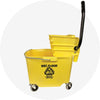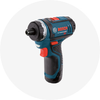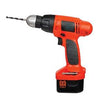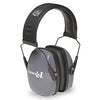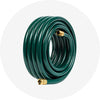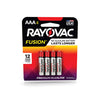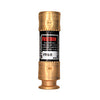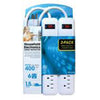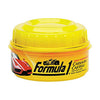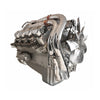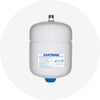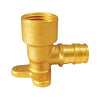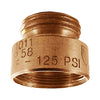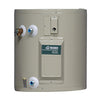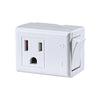The Pros and Cons of Heating Cable for Your Roof
∙ min read
Heating or deicing cable works by melting grooves into accumulated snow. As the snow and ice melt, the water travels down these grooves and into the building's gutter system, preventing ice accumulation.
Before investing in roof heating cables or coils, you should weigh the pros and cons of the purchase. Unfortunately, many people do not have an accurate idea of how heat tape or cables work, leading to disappointment and frustration later. Here is a list of some pros and cons of heating cable for your roof.

Pro: Heating Cable Efficacy
When a roof heat cable is correctly installed, it tends to work well. But unfortunately, many homeowners or business owners do not believe the product works because they still have snow collecting on their roofs.In truth, heating cables will not eliminate the presence of snow or ice on your roof - that is not the purpose of the device. Instead, the goal of the devices is to prevent ice dams by creating a path for melting snow.
Ice dams occur when there is no clear path for melting snow. As the snow accumulates on the edge of the roofline, it blocks runoff, allowing ice buildup.

Con: Increased Utility Costs
The primary issue with using a gutter heat cable is the potential utility cost. These devices require electricity to heat, leading to higher-than-average utility bills.Thankfully, some gutter heating systems allow customization or operate with some autonomy. For example, some designs will enable users to set specific operating times to avoid continuous running. Thankfully, more expensive models include features that automatically turn the system on or off, depending on the temperature.
Unfortunately, any additional features that can improve cost efficiency tend to increase the initial cost of the product. However, the price is often worth it when your other options are limited to costly roof repairs.

Pro: Easy Installation
When reviewing heating coils or cable, there are various options, including pipe heating cable or tape. Depending on your skill level, the variety of products can allow for easy installation.Ice or heat tape is one of the most straightforward systems to install because it is an adhesive coil. However, it is best to be comfortable and sure-footed on a ladder to work with such products.
Because of the importance of proper installation, many cable models require or advise professional installation. Remember, safety is paramount, so if you are uncomfortable or not confident with your skill level, hire a pro.

Con: Not a Catch-All Solution
Regardless of easy the installation might be, all property owners must remember it is not a catch-all solution. The heating tape or coil will not remove or eliminate all snow and ice from your roof.Accumulation of snow is not the utmost concern to heat cable manufacturers. Instead, the focus of these manufacturers is eliminating the risks of ice dam formation and preventing significant roof damage.
If you want to remove more snow from your roof, you can try other tools. A roof rake is one option. However, if you use a roof rake, be careful with the amount of pressure you use. Too much pressure can dig into shingles and roofing materials.

Pro: Damage Preventative
While many people might write off heating elements because of increased utility costs, they should remember these devices prevent more costly repairs. Ice dams allow excess moisture to build and back up under shingles. The excess water can lead to roof leaks and other damages.If water makes it into the attic space of a property, there is an increased risk of mold and other damage. When mold takes root, it is challenging to remove. Unfortunately, loose attic insulation and humidity provide a thriving environment.
Heat coils reduce the risks of such damages by providing pathways for snow to clear the roof. Ice dams cannot form without snow building up on the edges of a building.
Heat cables operate most effectively during warmer winter weather. While that might seem ineffective, it is the opposite. The purpose of these heating elements is to provide a clear path for melting snow to avoid an ice dam problem, so it makes sense they operate most effectively during warmer periods rather than frigid. If you are wondering what brand to select, Easy Heat is one of the most recognized brands for heating cable.
It should be noted that these "warmer" temperatures are around the freezing point when ice dams are most concerning. Therefore, these products operate most effectively at precisely the right times.

It is hard to decide when and if you should purchase heating cables for your house or building, but with this list of pros and cons, you should evaluate if ice dam prevention is a priority and make a budget to tackle this project for the winter months. To ask any question you might have about roof deicing cables or any other winter safety products, contact our Experience Makers.


